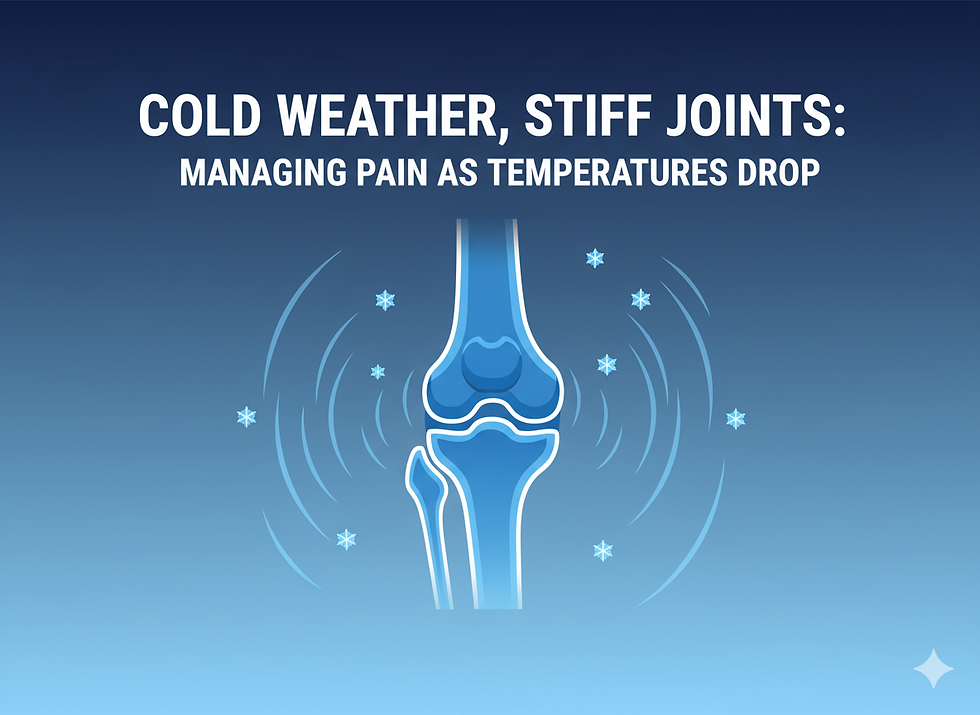Mobilizing the Myofascial System
- K-Town Physio

- Nov 12, 2024
- 3 min read
Updated: Jan 13

What is Fascia?
Fascia, by definition, is a sheath of connective tissue that attaches, encloses and separates muscles and internal organs. There isn’t an organ, muscle, blood vessel or nerve that isn’t connected to it or enveloped by it. It forms the basic structural architecture of the human body. It is the “glue” that holds our bodies together. Fascia is composed of collagen (the most common protein in the body), elastin (elastic protein fibers), fibroblasts (produce ground substance and connective tissue fibers) and ground substance. Ground substance is a watery gel that has an ability to change viscosity depending on the stresses placed on it. This gel becomes more viscous/dense in areas that are not moved often enough or along lines of stress. This results in a reduction in movement or flexibility in the affected area.
What is it’s role in the body?
Fascia plays many important roles in our body. Fascia maintains our structural integrity, our static postural support and our dynamic stability. It provides shock absorption and offers protection against physical trauma. It also has a role in regulation of the inflammatory reaction to injury. There are other important roles that fascia is responsible for, including intercellular communication and cellular exchange processes, as well as playing a large role in immune function. The sheaths of connective tissue are arranged in to lines. For example, the deep front line connects the entire body at its core. It begins at the front of your cranium, facial bones, jaw and extends down posterior to your sternum/breastbone, surrounding the internal organs, diaphragm, pelvic floor, front of the hip, inner thigh/shin and to the bottom of the foot. The illustrations below shows fascial lines of the body


from “Anatomy Trains” by Thomas Myers.
If you look at these diagrams, it doesn’t take much to realize how areas of our body so connected with one another. An injury or problem in one area of our body can have far reaching effects if the fascia becomes restricted. If you’ve ever wondered if your shoulder pain can be related to your hip pain, the answer is yes!
Can Fascia create pain?
Fascia is the richest sensory organ in the human body. It has over 200 million nerve endings. Human studies indicate that the fascia is more sensitive to pain than either the skin or the muscles. Many nerve endings in fascia are sensitive to pressure and stretch, and provide important feedback to our brain for proprioception. There are a number of factors which can contribute to fascial pathology. Some of these include trauma, micro-trauma, immobility, surgery (scarring, adhesions), and poor posture. These factors may induce biomechanical changes in the connective tissue which will in turn, have effects on its viscoelastic properties. Ultimately, binding of fascial elements or “fibrosis” can occur. Fibrosis does not automatically dissipate after the area has healed.
How do we treat Fascia?
There are many ways we can influence fascia with physiotherapy. Manual therapy, exercise, dry needling, massage, trigger point release and soft tissue mobilization are commonly used to improve fascia movement and function. In addition to these treatment options, there are myofascial mobilisation techniques developed specifically with the fascial lines in mind. This approach looks for barriers to movement along the fascial lines in connection with the primary source of pain or dysfunction. Doreen Killens is a physiotherapist from Montreal who has developed “Mobilisation of the Myofascial System or MMS” She has integrated many techniques from attending courses and seminars with experts on the topic from around the world. K-Town Physiotherapy is pleased to have Doreen in Kingston in November to instruct a course. Many of K-Town’s physiotherapists are attending. I have had the opportunity to attend two of Doreen’s courses over the past two years. I have been practicing physiotherapy myself for over thirty years, and the information and the mobilization techniques that I have put into practice have dramatically changed my approach and to treating many orthopaedic problems.
Dan Willemse, Physiotherapist.



